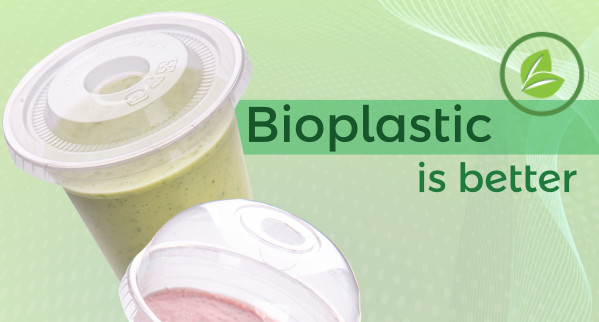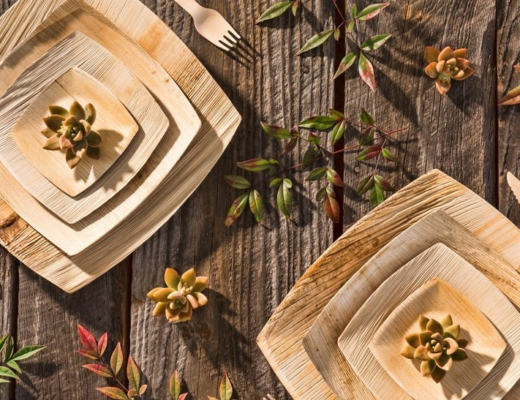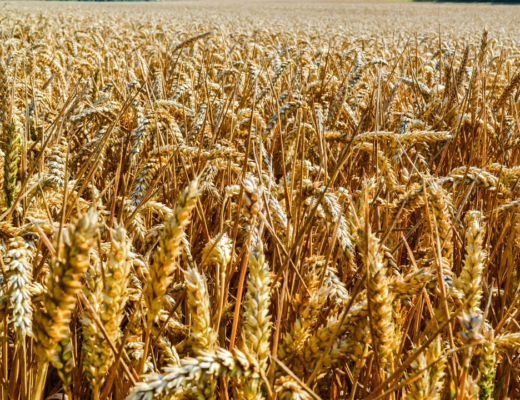For those of us who want to stand for environmental justice, it can be difficult to sort out what choices will have the most impact in decreasing pollution on the planet. The conversation about plastic grows more complicated every year. As a global society, we cannot simply stop using it. We depend on it. We need it. However, there is awareness to be gained and choices to be made that will help create positive change. In the food industry, both consumers and business owners have power to make positive change, especially when it comes to choices and awareness about plastic.
Plastic as we know it was created in 1907 when Leo Baekeland invented Bakelite. Completely synthetic, it contained no molecules found in nature. Such was the beginning of the Polymer Age.
What is a polymer?
Polymers are chemical compounds that consist of long repeating chains of molecules. Some naturally occurring polymers include: wood, cotton, silk, and leather. Synthetic polymers are known as plastics. The chemistry and technology that enabled humans to create synthetic polymers were fine tuned in the early twentieth century. Today, plastics are everywhere.
Plastics are in toys, computers, clothing, sports equipment, carpet, appliances, automobiles, building materials, fashion accessories, dishes, and much much more. Plastics play an increasingly large role in medicine, electronics, aerospace, and advanced structural composites.
Because of our ever improving understanding of how to manipulate plastic to meet our needs across nearly every industry all over the globe, it is no wonder our dependence on it increases every year.
Why is depending on plastic problematic?
Many plastics are made from liquid petroleum gas or natural gas. These resources are not renewable, so when we run out, we can’t make more of the resource- or the plastic. In addition, extracting such fuels can be quite harmful to our oceans and atmosphere. Every year, tens of thousands of gallons of crude oil are spilled into the ocean, toxic emissions are spewed into the air, natural habitats are disrupted or destroyed, and international politics become a little more tense.
But isn’t plastic recyclable?
Ish.
#1 PET plastic is the most commonly used plastic in the US consumer products. On consumer packaging, PET plastic is designated with #1 inside the triangle of arrows. About 25% of it is recycled and the recycled fiber can be used to make fleece garments, carpets, stuffing for pillows, and life jackets.
Need PET juice bottles for your cold pressed creations?
#2 HDPE is the stiff plastic used to make milk jugs, detergent bottles, and some plastic bags. It is the most commonly recycled plastic and it is one of the safest forms of plastic. And products made of HDPE are reusable and recyclable.
#3 PVC is not often recycled. Less than 1% of it is. It’s the soft, flexible plastic used to make clear plastic food wrap, children and pet toys, and blister packaging. It contains numerous toxins. Though it can be repurposed, it is not recommended for applications with food for children’s use.
#4 LDPE is used for shrink wrap, dry cleaning bags, squeezable bottles, and plastic bread bags. These bags can be reused, but not always recycled. It is important to check with the local collection service to see whether or not they will accept LDPE.
#5 PP is tough, lightweight, and heat resistant. It is an effective barrier against moisture, grease, and chemicals. Cereal is often packaged in PP to keep it dry and fresh. Though #5 is becoming more accepted by recyclers, only 3% is currently recycled.
#6 PS is often used to make styrofoam food and drink containers. It contains carcinogens and makes up about 35% of landfill material in the US. It is difficult to find a recycler for PS, but if it is in the form of packing material is can be reused by some shipping services.
#7 is the catch-all category for all “Other” plastics. Recycling protocols for this category are not standardized. These are the new age plastics that did not make it to the plastic recycling categorization party on time. Some of them include BPA, polycarbonate, LEXAN, and compostable PLA plastics.
Isn’t there something lucky about #7?
Yes. #7 includes PLA plastics.
Discovered in the 1920s by Wallace Carothers, PLA plastics are made with plants from the midwest rather than fossil fuels from the Middle East. In most cases, PLA can be incinerated or composted. PLA plastics need to be composted in a high-temperature commercial composting system. They will not compost in your backyard. But PLA plastics can be produced from already existing manufacturing equipment, which makes it very relevant as an alternative for PET.
Is PLA toxic?
Not in solid form, but we wouldn’t recommend inhaling it during the manufacturing process.
What are the disadvantages to PLA?
PLA cannot be used for high temperature applications. PLA plastics that are exposed to temperatures above 110℉ could begin to soften or deform.
How does PLA stack up against PET?
Producing PLA uses 65% less energy than producing conventional plastics like PET. It also generates fewer greenhouse gases, and contains no toxins. Also, bioplastics can be made from low-water plants such as switchgrass that are about 100 days old. PET plastic is made from oil that could be more than 100 million years.
What is the best application for PLA plastic?
Cafeterias, convention centers, and sport centers that ship their garbage to commercial-scale composters instead of trashing it are in the perfect position to reap the rewards of PLA. But any business or consumer who wishes to experience the durable reliability of plastic without wasting precious fossil fuels can use PLA and be on the trail toward a plastic solution.
No matter what kind of plastic you choose to use, it should be recycled or disposed of properly. There is no excuse for the ever expanding amount of plastic in the ocean. Before you choose, please let us know how we can help you move toward a more eco-friendly tomorrow. Learn more about PLA plastic options.
How can we help with your business? Give us a call at 1-800-851-9273, Monday through Friday, 8 am to 5 pm, CT or email us at service@restaurantware.com to get your questions answered. Click here for our catalog. We look forward to hearing from you soon.




